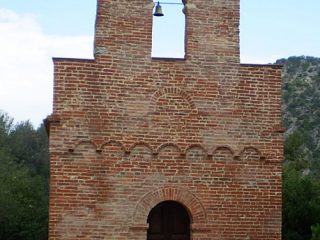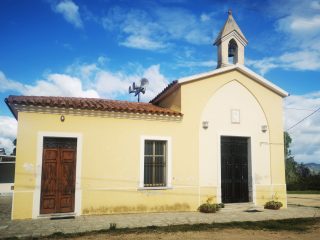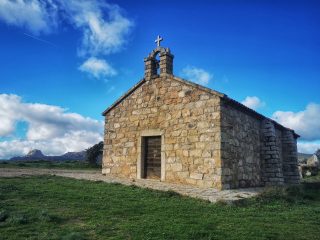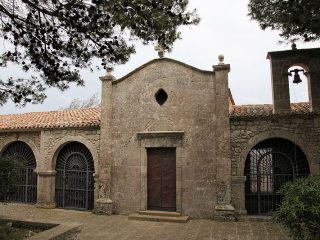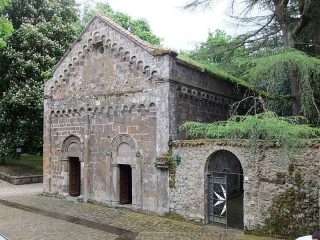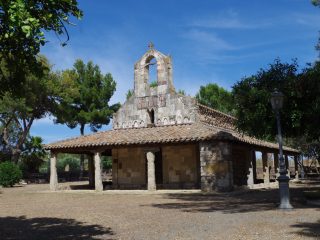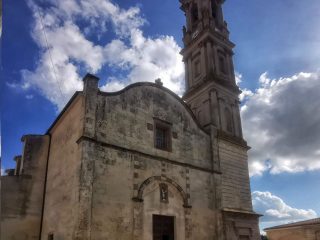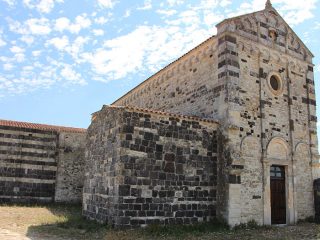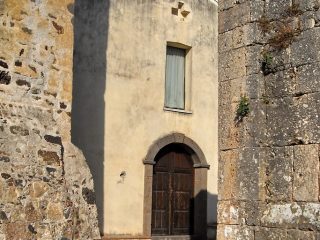The basilica named after Saint Helena of Constantinople stands in a large square in the town’s historical centre.
The current-day building was erected between 1809 and 1825, to replace the sixteenth-century church destroyed in a fire; it was shaped in Catalan-Gothic style with single nave and apse and it too had replaced a church dating back to the XII century. The demolition of the original layout in Romanesque style became necessary due to its dimensions which were adapted to welcome the, by then, growing population.
The imposing basilica follows a Latin cross layout with a single large barrel-vaulted hall, overlooked by three chapels on each side. Even the large, intercommunicating chapels are covered with barrel-vaults lavishly decorated with wall paintings. The intersection of the arms, on the other hand, is covered by an octagonal dome, rounded off with a lantern.
The gabled facade, with its steep vertical expansion, sits between the octagonal bell tower and the clock tower, that enhance the verticalness of the facade. This is rounded off with a triangular gable and articulated in two orders with jutting-out cornices.
Inside, we find the Baroque pulpit in embellished marble and the work of the Genoan craftsman, Pietro Pozzo; while in the presbytery we find the large high altar, extended in 1907 by the sculptor Giuseppe Sartorio, who added a bed foundation with angels holding a curtain.
The chapel of the Blessed Sacrament, covered by a stellar cross vault, is the only surviving part from the Gothic layout. A sixteenth-century wooden Crucifix and boards from the Sant’Elia altar piece painted by Antioco Mainas from Cagliari in the middle of the XVII century, are kept here.
The basilica preserves two statues of its patron saint: one inside a niche in the high altar, probably dating back to the Eighteenth century; the second one, on the other hand, is carried in procession and depicts Saint Helena wearing a green dalmatic, damask armour and cloak, while holding and pointing to a cross.




